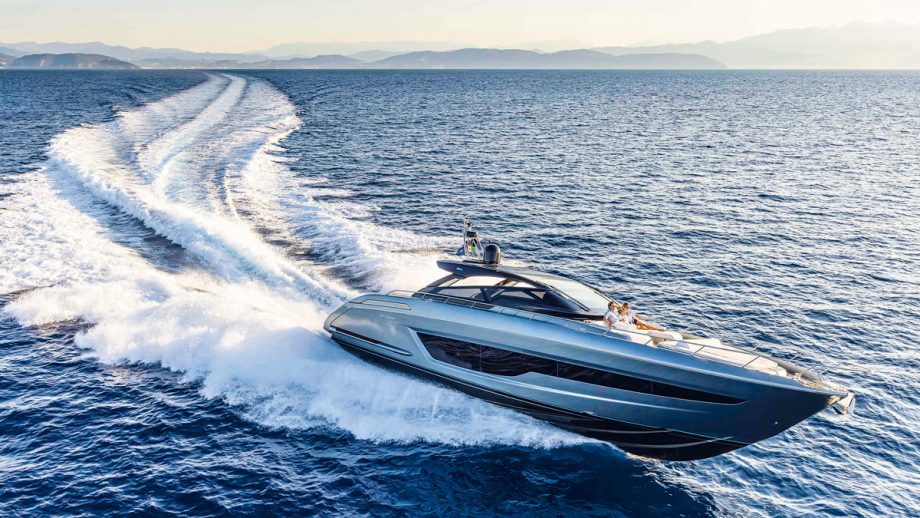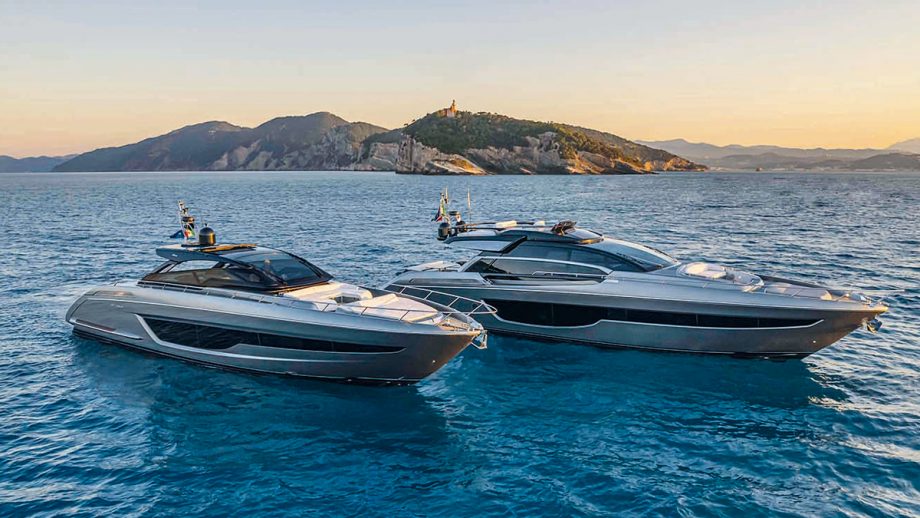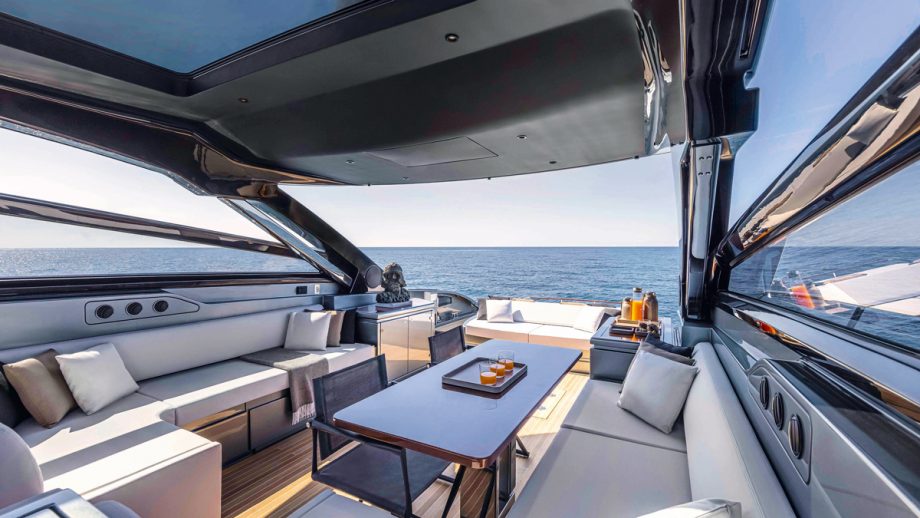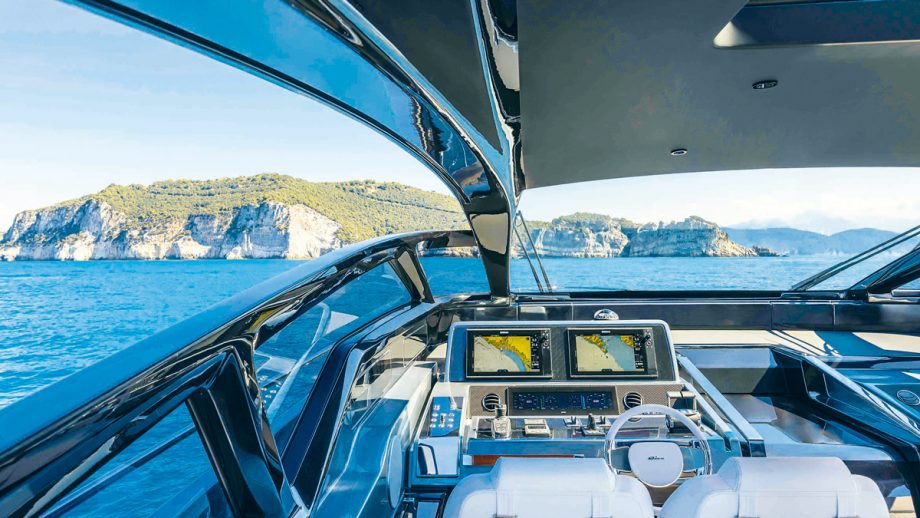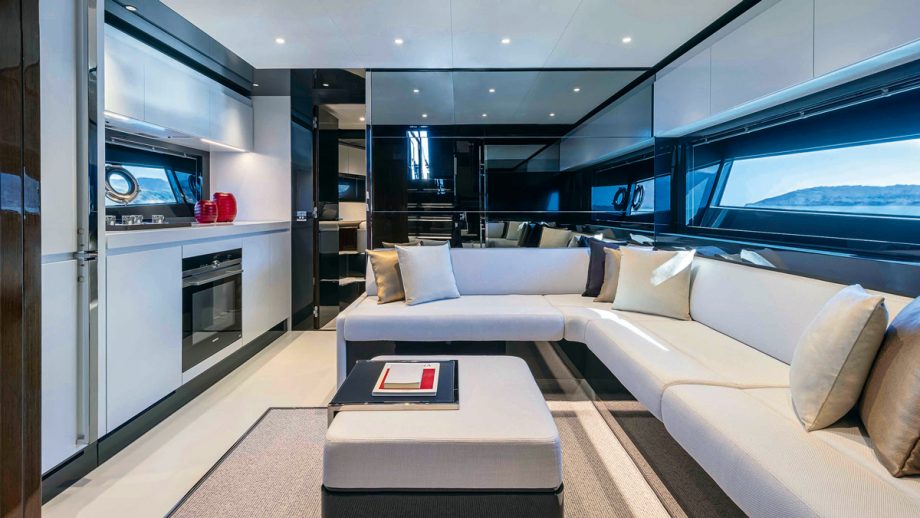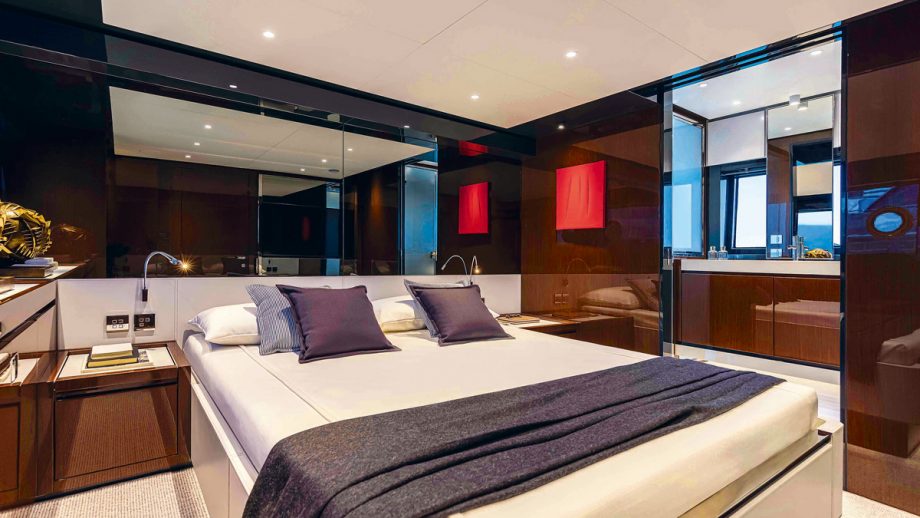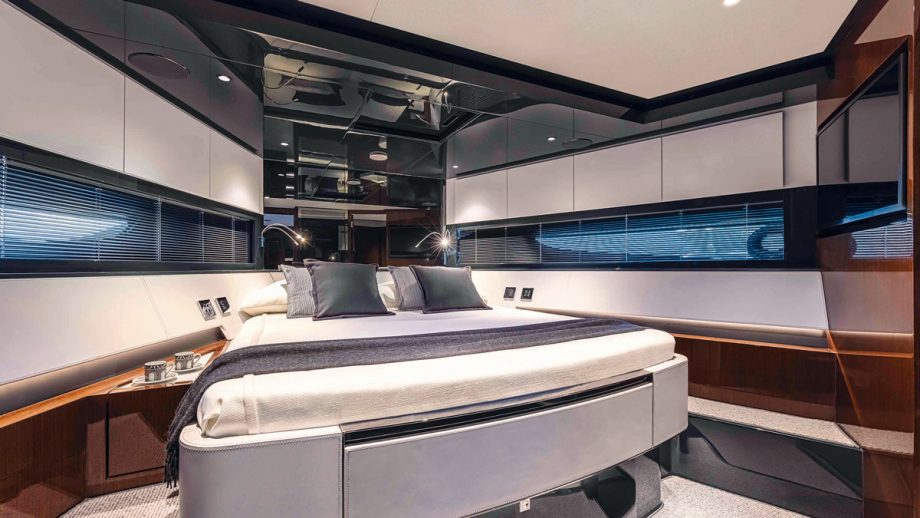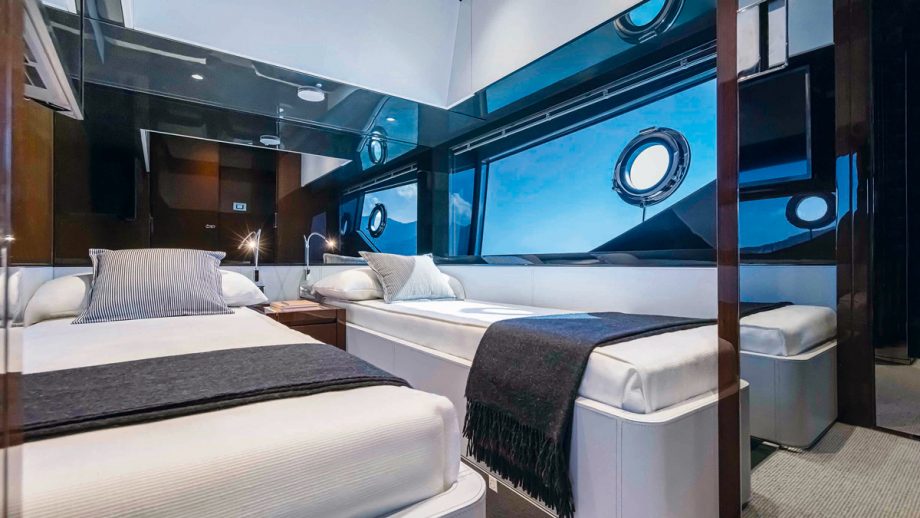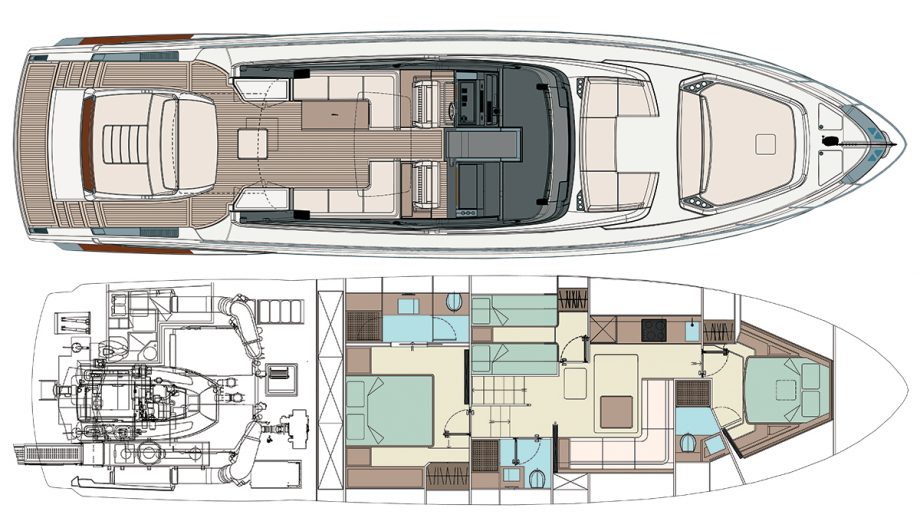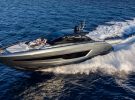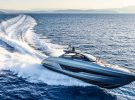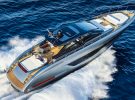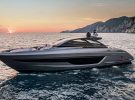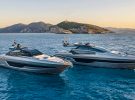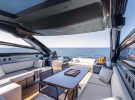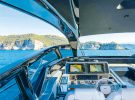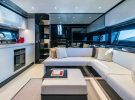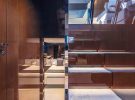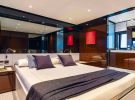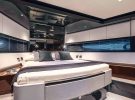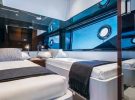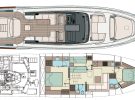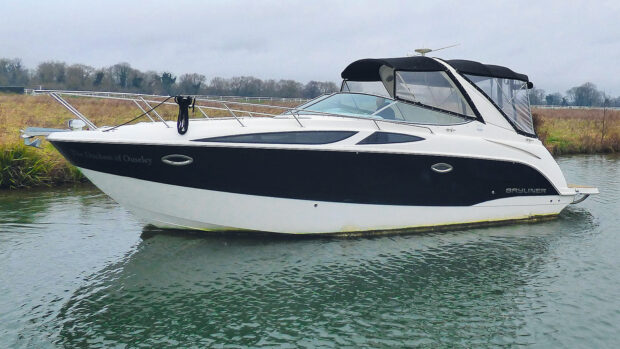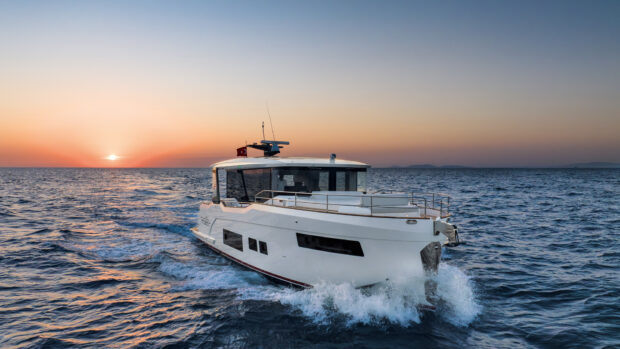This famous Italian marque builds very different boats to the ones that made its name but does this £3 million 70ft Riva 68 Diable still have the same old magic?
Few designers must feel a heavier weight of expectation as they put pen to paper than those in the team at Officina Italiana Design who have been drawing Rivas for the last 27 years. Imagine having that history, that reputation for innate beauty and that iconic name weighing down heavily on the tip of your pencil.
That’s one way of looking at it, the other is that Riva has come such a long way since those seductively varnished mahogany craft granted the brand its legendary status.
Yes, the name sets a certain standard but the design team also has carte blanche to create something special and not to worry (too much) about the cost. Practicality be damned, just make it beautiful.
In this regard it is mission accomplished as far as the Riva 68 Diable (French for “devil”) is concerned; it is absolutely gorgeous (and just shy of £3 million in base spec). Pretty enough to make you stop in your tracks and drink it in from elegant stem to seductively sloping stern.
Article continues below…

Riva 56 Rivale: A veritable floating sculpture full of surprises
With its unique combination of art and design, of engineering and aesthetics, synonymous with the Italian shipyard Riva, the 56

Princess V62 yacht tour: A fabulous sportscruiser that might just steal your heart
Perfect proportions
Forget your vertical bows and slab-sided topsides, this is a boat that looks right because it is designed to look good above anything else, and the interior can just fit into the space that’s left, rather than the other way around.
So achingly sweet are its proportions that it’s hard to believe that its LOA is just a couple of feet short of 70ft and it weighs in at nearly 40 tonnes.
You get drunk on the details, big and small. The carbon fibre roof is a standout piece of design, its forward mullions diving inboard of the fiercely raked windscreen appearing to hover over the deeply sunken cockpit seating.
It’s lovely the way the one-piece and gently curved windscreen peels into the hardtop, which then splits into a pair of slender struts that plunge down to deck level. It’s all just gorgeous and no expense has been spared to ensure that there isn’t a line out of place.

The Riva 66 Ribelle is a sportsbridge based on the same hull as the Riva 68 Diable
Our test boat was finished in ‘shark grey’ but within this avantgarde colour scheme there are nods to the boat’s predecessors, most notably the varnished mahogany spines that emerge from the boat’s hindquarters, as if an original Aquarama is hiding beneath the skin.
Get closer and the boat’s size becomes more apparent; the profile may be sleek but there is a generous freeboard and deep side decks with tall toe rails and subtly integrated guard rails from bow to stern.
You feel as though you are sitting in the foredeck seating rather than perching precariously on top of it and the combination of sun pad and sofa creates welcome outdoor living space on a 70-footer that doesn’t boast a flybridge (though there is an equally arresting sportsbridge version based on the same blueprint).
No expense has been spared to ensure there isn’t a line out of place
The main deck arrangement is relatively simple in its geometry but this only serves to highlight the focus on materials and fit and finish. The cockpit is a festival of polished stainless steel and mahogany so flawlessly glossy it still looks wet.
Two enormous L-shaped sofas dominate amidships with the option between them to have either a table to port and a moveable squab to use as a seat or coffee table or to have an identical table on the starboard side.
The standard arrangement feels like the better use of space and means guests don’t have to squeeze behind a table if they just want to sit down and relax.

There is the option to spec another dining table on the starboard side
Set into a unit aft of the navigator seat there is a 49in water-resistant, anti-glare TV that rises up at the press of a switch, nice if you want to watch a film on a balmy evening and don’t want to be on the lower deck.
Raise the roof
It’s this area that is best protected by the hard top, though there is a glass sunroof overhead that draws natural light into the space. It doesn’t slide but instead tilts open on a two-way pivot to allow the breeze to funnel in fore or aft.
In truth the main deck is so open it matters not how much ventilation the sunroof can provide. It’s a lovely mechanism, though.

Aft, there is a pair of wet bars with the usual sink/grill/fridge or ice maker combination and an aft bench connected to the four-person sun pad, which lifts to reveal a tender garage large enough for a Williams SportJet 345 and a couple of Seabobs. At the touch of a button a sunshade emerges from the hard top to offer some shelter over the aft sun pad.
The hydraulic bathing platform is something to behold. In what is now a familiar Ferretti Group trait, the platform slides down the angled transom revealing steps as it goes that are clad in thick teak and built into the hull, creating two well-protected stairways that lead into the water. Even this functional device carries out its duties with big dollops of panache.
Engine options have been kept quite simple on the Riva 68 Diable. There are just two and they both use twin 24-litre MAN V12 diesel blocks with either 1,550hp or 1,650hp. I don’t envisage many leaving Lake Iseo with the smaller ones.

“The steering feels fantastic, keeping it straight when cruising but coming alive if you throw it around”
I try not to arrive for a test with expectations lodged in my mind but I must admit that in driving my first Riva in 14 years of testing boats for MBY there was part of me that wanted the experience to live up to the hype.
It shares many major components with other boats in the sector from engines to gearboxes, throttles to electronics, how different could it possibly feel? It didn’t disappoint. Riva goes to great lengths to make sure that the parts of the boat you see and use regularly look and feel special, and the steering wheel is a particularly good example.
The design is simple but it looks fabulous and the soft leather and polished stainless steel are wonderfully tactile and weighty, setting the tone for the muscular performance that is to come.

There is good protection from the breeze thanks to the sleek windscreen
The helm seats (outrageously comfortable and adorned with faux straps and buckles, which makes them look oddly like posh luggage) are a little too far away from the dashboard so it feels natural to stand before the carbon fibre-clad helm.
The dash rises in tiers with throttles, thruster (bow and stern) sticks and Humphree trim controls closest to the wheel, twin Simrad MFDs at the top and a horizontal strip of beautifully rendered digital engine dials by Boning.
This screen isn’t interactive, that’s what the Simrads are for, but it’s a lovely way to ensure that engine information is always on display.

Fly-by-wire steering
In a world moving towards pod drives and away from all-out performance the Riva 68 Diable is a two-fingered salute in a silk glove. Power is enormous so even a gentle shove of the ZF throttles provokes a barrel-chested rumble as 3,300 horses draw the boat on to the plane and up to a laughably comfortable top speed of 38.7 knots.
It’s safe to say that 40 knots wouldn’t be out of reach in the right conditions and at a 30-knot cruise the Riva 68 Diable isn’t even trying. The steering is Ferretti Group’s hydraulic fly-by-wire system, which returns the wheel to centre in the same way a car’s steering does and adjusts the lock limit depending on boat speed.
It takes some getting used to but it feels fantastic at speed, keeping the boat comfortably on the straight and narrow when cruising but coming alive if you choose to throw it around a bit.

And the whole time you are acutely aware that you are driving something that looks so special (if you aren’t, the swivelling heads and Meerkat-like dance of smartphones will remind you).
You can’t possibly risk spooning something this glamorous into the quayside and shattering the illusion of cool but thankfully there are a slew of driver aids to make berthing easier.
Hydraulic bow and stern thrusters are a start but the Xenta joystick offers the precision of IPS by combining said thrusters and the engines. It even has a similar function that holds the boat in place using GPS if you’re busy elsewhere.

The sleek lower saloon drips with cool
Below decks the layout isn’t what you’d describe as revolutionary but the finish is exquisite. Yet more sumptuous woodwork and leather in a lower saloon that is crisp and clean with a simple L-shaped seating area opposite a well-designed galley that is so neatly integrated it’s almost invisible.
The VIP double is forward of the saloon with its own ensuite and there is a guest twin aft that has use of the day heads on the opposite side of the boat. The owner’s cabin is a suitably plush full-beam affair that has its ensuite arranged down the port side with a centrally positioned sink that is flanked by separate shower and toilet cubicles.
It’s an interior that isn’t garish or exuberant but is effortless in its execution and a wonderful place to be.
Price as reviewed:
£2,390,000.00 ex. VAT
Verdict
Effortless. There’s a word to describe this Riva. Its presence, its style, its performance, its handling, its ability to outshine yachts of many times its size and cost – it does it all with ease. It’s true that this famous yard’s current range is a long way from its roots these days but the intoxicating Riva essence ripples through them all and it is especially present in this wonderful, expensive, madly beautiful sportscruiser.
Details
LOA: 67ft 10in (20.7m)
Beam: 17ft 4in (5.29m)
Draught: 5ft 10in (1.78m)
Displacement: 37 tonnes (light)
Fuel capacity: 3,800 litres
Water capacity: 600 litres
Test engines: Twin 1,650hp MAN V12 24.3-litre diesel
Top speed on test: 38.7 knots
Cruising range: 274 miles @ 20 knots / 320nm @ 12.4 knots
Fuel consumption: 233lph @ 20 knots / 118lph @ 12.4 knots
Noise: 76dB(A) @ 20 knots / 73dB(A) @ 12.4 knots
RCD category: A for 16 people
Design: Officina Italiana Design & Ferretti Group





